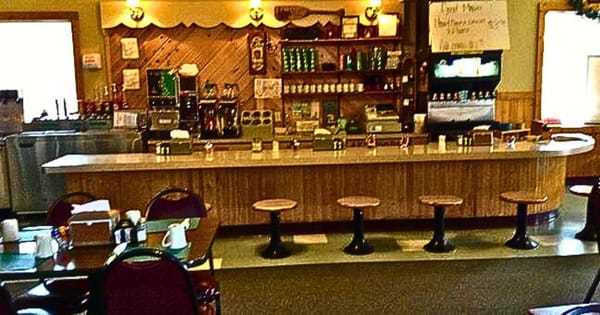The Definitive Guide to the Flambeau River State Forest

The Flambeau River State Forest has a rich history that dates back to the presence of Native Americans in the region. From the early days of logging and settlement to the creation of the state forest, this area has undergone significant changes over the years.
Explore the geography and climate of the forest, the diverse flora and fauna that call it home, the various recreational activities available, and the conservation efforts being made to preserve it for future generations.
Join us on a journey through the past, present, and future of the Flambeau River State Forest.
Key Takeaways:
- The Flambeau River State Forest has a rich history, with evidence of Native American presence and a long history of logging and settlement.
- The state forest offers a diverse landscape, with a mix of topography and a varied climate that provides opportunities for a variety of activities, from camping and hiking to water sports and winter activities.
- Efforts are being made to conserve and sustainably manage the Flambeau River State Forest, including sustainable forestry practices and conservation projects, in order to preserve its natural beauty and protect endangered species for future generations to enjoy.
The History of the Flambeau River State Forest
The Flambeau River State Forest boasts a rich history that dates back to the time of Native American presence in the region. Subsequently, the area witnessed significant logging activities that contributed to its development and settlement by various communities.
Native American tribes, such as the Ojibwe and Menominee, revered the land for its abundant resources and spiritual significance, establishing a deep connection with the flowing river and lush forests. The arrival of European settlers in the 19th century brought about a transformation of the landscape, with logging becoming a primary economic activity that shaped the environment.
Environmental conservation efforts began in the early 20th century to protect the forest's biodiversity and ensure sustainable resource management, leading to the establishment of the Flambeau River State Forest in 1930.
Native American Presence
The Native American presence in the Flambeau River State Forest is deeply rooted in the cultural heritage of the region, with tribes such as Ojibwa, Ho-Chunk, and Potawatomi inhabiting the land long before European settlers arrived.
The Ojibwa, also known as the Chippewa, were skilled hunters and fishermen who revered the natural world around them. They held spiritual ceremonies to honor the spirits of animals they harvested and practiced sustainability in their way of life.
The Ho-Chunk people, originally from the Great Lakes region, had a profound connection to the land, viewing it as a sacred entity. They passed down stories and traditions through oral history, preserving their rich cultural heritage.
The Potawatomi tribe, known for their agriculture and medicinal knowledge, cultivated the land and harvested resources with respect and gratitude. They celebrated their connection to nature through traditional ceremonies and dances.
Logging and Settlement
The logging activities in the Flambeau River State Forest played a pivotal role in shaping the landscape and attracting settlers to establish communities along the riverbanks.
The logging methods employed in the Flambeau River State Forest were primarily selective logging techniques, focusing on harvesting specific tree species while leaving others intact to maintain biodiversity. This approach, although economically beneficial, led to significant changes in the forest ecosystem, impacting wildlife habitats and altering the natural balance of the region. As more settlers were drawn to the area due to the abundance of timber resources, logging camps and sawmills sprang up along the riverbanks, marking the beginning of a new era in settlement patterns.
Creation of the State Forest
The establishment of the Flambeau River State Forest marked a milestone in the conservation efforts of the region, ensuring the protection of its natural resources and biodiversity for future generations.
The creation of this state forest was a result of a collaborative effort between various conservation organizations, local communities, and government agencies, all united by a common goal - preserving the rich ecological heritage of the area.
By designating the Flambeau River State Forest, officials aimed to safeguard the diverse flora and fauna, promote sustainable land management practices, and provide recreational opportunities in harmony with nature.
Geography and Climate of the Flambeau River State Forest
The Flambeau River State Forest is situated in a picturesque landscape, characterized by diverse topography, a range of habitats, and distinctive weather patterns that shape the region's unique climate.
Located in northern Wisconsin, the Flambeau River State Forest spans over 91,000 acres, making it a sizable natural reserve with plenty to explore. The forest features a mix of upland hardwoods, lowland conifers, and wetlands, creating a rich and varied ecosystem. Its topographical diversity includes rolling hills, steep valleys, and meandering waterways, offering visitors a mix of scenic views and outdoor activities. The weather in this region is heavily influenced by its proximity to Lake Superior, resulting in cooler temperatures and higher precipitation levels compared to other parts of the state.
Location and Size
The Flambeau River State Forest spans across 91,000 acres and is located in Sawyer and Price Counties, offering visitors a serene retreat amidst nature's bounty.
The Flambeau River State Forest, situated in northern Wisconsin, covers a vast area of mixed forests, wetlands, and peaceful waters, making it a haven for outdoor enthusiasts and wildlife enthusiasts alike. This expansive forest stretches over rolling hills, river valleys, and lush meadows, providing a diverse range of habitats for various plant and animal species to thrive.
With its boundaries defined by the meandering Flambeau River, the forest offers abundant recreational opportunities, including hiking trails, fishing spots, and camping grounds. Its accessibility is enhanced by well-maintained roads and designated parking areas, making it a popular destination for day trips or weekend getaways.
Topography and Land Features
The topography of the Flambeau River State Forest is marked by varied topographical features, including rolling hills, lush valleys, and pristine water bodies that enhance the scenic beauty of the region.
These rolling hills provide picturesque lookout points offering panoramic views of the forest. The lush valleys are dotted with diverse flora and fauna, creating rich ecological habitats for a variety of wildlife. The pristine water bodies, such as lakes and streams, contribute to the forest's unique charm and support a wide range of aquatic life.
Climate and Weather Patterns
The climate of the Flambeau River State Forest is influenced by various factors, resulting in distinct weather patterns that vary throughout the year, creating a dynamic environment for flora and fauna.
During the summer months, the forest experiences warm temperatures ranging from 70-80 degrees Fahrenheit, accompanied by occasional thunderstorms due to the increased humidity levels.
Fall brings a vibrant display of colors as the temperatures start to drop, ranging between 40-60 degrees Fahrenheit.
Winter transforms the forest into a winter wonderland with temperatures often falling below freezing, blanketing the landscape in snow and ice.
In spring, the forest comes to life with temperatures gradually rising and rainfall rejuvenating the ecosystem.
Flora and Fauna of the Flambeau River State Forest
The Flambeau River State Forest is a haven for diverse plant and animal species, with its lush forests supporting a rich tapestry of flora and fauna, including several endangered species that find refuge in this pristine habitat.
Wildlife enthusiasts and nature lovers can revel in the sight of majestic white-tailed deer gracefully roaming through the verdant woodlands, while birdwatchers can spot rare songbirds fluttering amidst the branches. The forest's ecosystems are teeming with life, from elusive black bears to vibrant wildflowers that blanket the forest floor in a riot of colors. Conservation efforts are vital in maintaining the delicate balance of this unique ecosystem, ensuring that future generations can continue to marvel at the beauty and diversity of the Flambeau River State Forest.
Plant Life
The plant life in the Flambeau River State Forest is characterized by a diverse array of vegetation, including white pine trees, that thrive in the region's fertile soil and favorable climatic conditions.
White pine trees play a crucial role in the forest ecosystem, providing shelter and food for various wildlife species. Other notable plant species found in the area include red oak, sugar maple, and black cherry trees, each adapted to different microenvironments within the forest.
These plants exhibit fascinating distribution patterns across different altitudes and soil types, showcasing their remarkable resilience and ability to adapt to varying conditions. Their adaptations, such as deep root systems and specialized leaf structures, are key to their survival in the competitive forest environment.
Animal Life
The animal life in the Flambeau River State Forest is teeming with diverse wildlife, including black bears, that roam freely in their natural habitats, showcasing the region's ecological richness.
Aside from black bears, the forest is also home to majestic white-tailed deer, elusive gray wolves, playful river otters, and a variety of bird species such as bald eagles, sandhill cranes, and warblers. These animals play integral roles in the forest ecosystem, contributing to seed dispersal, predator-prey relationships, and overall biodiversity. Observing their behavioral patterns and interaction with the environment provides valuable insights into the delicate balance of nature.
Endangered Species
The Flambeau River State Forest serves as a crucial sanctuary for several endangered species, including the majestic Gray Wolf, that face threats to their survival in other habitats.
These endangered species find a safe haven within the protected boundaries of the forest, away from human encroachment and poaching activities. Conservation efforts such as habitat restoration, controlled burns, and wildlife monitoring programs are implemented to ensure the well-being and survival of these vulnerable populations.
Along with preserving the natural habitats of these species, the Flambeau River State Forest plays a vital role in educating the public about the importance of biodiversity and the delicate balance of ecosystems. By raising awareness and promoting sustainable practices, the forest contributes to the broader mission of global conservation efforts.
Recreation and Activities in the Flambeau River State Forest
The Flambeau River State Forest offers a plethora of recreational opportunities for outdoor enthusiasts, ranging from camping and hiking to fishing, hunting, water sports, and exciting winter activities that cater to visitors of all ages and interests.
One of the main draws of the forest is its diverse camping grounds, providing both forested seclusion and riverside settings for a truly immersive outdoor experience.
For those seeking adventure on foot, the extensive network of hiking trails weaves through picturesque landscapes, offering varying levels of difficulty to suit hikers of all abilities.
Fishing enthusiasts will find themselves in paradise, with numerous spots along the river teeming with a variety of fish species waiting to be caught.
The forest's hunting opportunities appeal to those looking to engage in the thrill of the chase amid the wilderness.
Water sports enthusiasts can take advantage of the pristine river for kayaking, canoeing, and tubing adventures, while winter revelers can enjoy activities like cross-country skiing and snowshoeing amidst the snow-blanketed scenery.
Camping and Hiking
Camping and hiking enthusiasts flock to the Flambeau River State Forest to immerse themselves in the natural beauty of the surroundings, with well-maintained camping grounds and scenic hiking trails that offer breathtaking views of the forest landscape.
The Flambeau River State Forest provides a variety of camping facilities catering to different preferences, from primitive tent sites for those seeking a more rugged experience to modern campgrounds with RV hookups for added comfort. Visitors can enjoy amenities such as picnic tables, fire pits, and clean restroom facilities, ensuring a pleasant stay amidst nature.
For hikers, the forest boasts an extensive network of trails, ranging from easy strolls along the riverbanks to challenging routes through dense woodlands. Hikers can explore the diverse ecosystems within the forest, encountering picturesque vistas, serene water bodies, and abundant wildlife along the way.
Fishing and Hunting
Fishing and hunting expeditions in the Flambeau River State Forest offer anglers and hunters ample opportunities to engage with nature, with the forest's water bodies teeming with fish and its lush woodlands providing ideal hunting grounds for enthusiasts.
The Flambeau River State Forest boasts a variety of fishing spots, such as Lake of the Pines, Crowley Flowage, and Teal Lake, where anglers can expect to reel in species like northern pike, walleye, muskie, and smallmouth bass.
- Hunters flock to this forest for the chance to pursue game animals like deer, black bear, and grouse. The forest's mix of hardwoods, conifers, and wetlands creates diverse habitats for these animals.
Regulations in place ensure sustainable fishing and hunting practices, preserving the balance of wildlife populations and conserving the natural beauty of the Flambeau River State Forest.
Water Sports
Water sports enthusiasts can partake in thrilling adventures on the Flambeau River, enjoying activities such as kayaking, canoeing, and rafting amidst the scenic beauty of the state forest's waterways.
The Flambeau River State Forest offers a perfect blend of calm waters for beginners and challenging rapids for experienced paddlers, making it an ideal destination for a range of skill levels. To ensure safety, adventurers are advised to wear appropriate safety gear, take guided tours if unfamiliar with the river, and be aware of weather conditions. Rental facilities along the riverbanks provide visitors with top-quality equipment, including kayaks, canoes, and rafts. Exploring the meandering waterways of the Flambeau River rewards enthusiasts with breathtaking views of lush forests, wildlife sightings, and peaceful serenity.
Winter Activities
Winter transforms the Flambeau River State Forest into a snowy wonderland, inviting visitors to enjoy a host of seasonal activities such as cross-country skiing, snowshoeing, and snowmobiling that showcase the forest's beauty in a different light.
Exploring the winter wonderland of the Flambeau River State Forest offers a serene escape into nature's icy embrace. The extensive network of cross-country skiing trails provides both beginners and seasoned skiers with thrilling routes through the forest's picturesque scenery.
For those seeking a quieter adventure, snowshoeing presents a tranquil way to immerse in the frosty surroundings, with designated routes that lead to hidden corners of the forest.
Thrill-seekers can rev up their snowmobiles and zip through the forest, feeling the adrenaline rush amidst the snowy expanses."
Conservation Efforts and Future of the Flambeau River State Forest
The conservation initiatives undertaken in the Flambeau River State Forest reflect a commitment to sustainable forestry practices, with a focus on mitigating threats to the forest ecosystem and implementing future plans and projects that ensure the longevity of this natural heritage.
One of the key objectives of the conservation efforts in the Flambeau River State Forest is to strike a balance between ecological preservation and responsible timber harvesting. By employing selective logging techniques and promoting forest regeneration, the forest management practices aim to sustainably utilize the resources without compromising the overall health of the ecosystem.
Ongoing research and monitoring programs help identify and address invasive species, climate change impacts, and habitat fragmentation that pose challenges to the forest's biodiversity. These initiatives demonstrate a proactive approach towards safeguarding the natural richness of the Flambeau River State Forest for future generations to enjoy.
Sustainable Forestry Practices
The adoption of sustainable forestry practices in the Flambeau River State Forest ensures the responsible management of timber resources, balancing ecological conservation with economic benefits for local communities.
Timber harvesting in the forest is carried out through selective cutting, which targets specific trees for harvest while leaving the rest of the forest intact to maintain biodiversity and wildlife habitat.
Reforestation efforts include planting native tree species to restore areas that have been harvested, ensuring the long-term sustainability of the forest ecosystem.
Forest management techniques such as prescribed burning are utilized to reduce fuel build-up, prevent wildfires, and promote the growth of diverse plant species.
Threats to the Forest
Despite conservation efforts, the Flambeau River State Forest faces various threats such as habitat loss, invasive species, and climate change, necessitating proactive measures to safeguard the forest's ecological integrity and biodiversity.
These challenges pose a significant risk to the delicate balance of flora and fauna within the Flambeau River State Forest.
Habitat degradation due to human activities such as deforestation and industrial development is a pressing concern, leading to the loss of critical habitats for native species. The encroachment of invasive species disrupts the natural ecosystem dynamics, outcompeting native plants and animals for resources.
The effects of climate change are increasingly evident in the forest, with rising temperatures and altered precipitation patterns impacting biodiversity and ecological processes. To combat these threats, effective mitigation strategies like habitat restoration, invasive species management, and climate-resilient ecosystem planning are essential.
Future Plans and Projects
The future of the Flambeau River State Forest is guided by visionary plans and projects aimed at enhancing biodiversity, promoting sustainable land use practices, and engaging local communities in conservation efforts that shape a resilient and vibrant forest ecosystem.
One of the upcoming initiatives at the Flambeau River State Forest involves the establishment of new wildlife corridors to support the movement of diverse species and enhance habitat connectivity. This project aims to create a more robust ecosystem that fosters the interdependence of plants and animals, contributing to the overall health of the forest.
In addition, the forest management team is planning to implement sustainable land management practices, such as selective logging and prescribed burns, to maintain a healthy balance between human activities and natural processes. By carefully monitoring and assessing the impact of these practices, the forest strives to achieve a harmonious coexistence between conservation and resource utilization.
Frequently Asked Questions
1. What is the Flambeau River State Forest and why is it worth visiting?
The Flambeau River State Forest is a 91,000-acre state forest located in northern Wisconsin. It is a popular destination for outdoor enthusiasts due to its beautiful scenery, diverse wildlife, and recreational opportunities.
2. How do I get to the Flambeau River State Forest?
The Flambeau River State Forest can be accessed by car via various state highways and county roads. The nearest major airport is in Minneapolis, Minnesota, and the closest regional airport is in Rhinelander, Wisconsin.
3. What activities can I do at the Flambeau River State Forest?
The Flambeau River State Forest offers a wide range of activities such as camping, hiking, fishing, boating, and hunting. There are also designated areas for ATV and snowmobile use.
4. Are there any amenities or facilities at the Flambeau River State Forest?
Yes, there are several campgrounds, picnic areas, and boat landings throughout the state forest. There is also a visitor center with information about the forest and its history.
5. Can I bring my dog to the Flambeau River State Forest?
Yes, dogs are allowed in the state forest but must be kept on a leash at all times. Please also remember to clean up after your pet to help maintain the natural beauty of the forest.
6. Are there any guided tours or educational programs available at the Flambeau River State Forest?
Yes, the state forest offers guided canoe trips, nature walks, and other educational programs throughout the year. Check their website or visitor center for more information and schedules.





